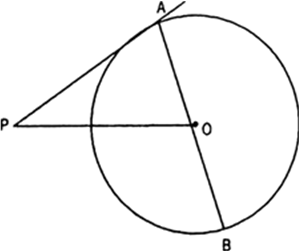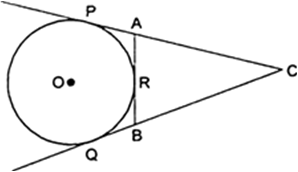 Short Answer Type
Short Answer Type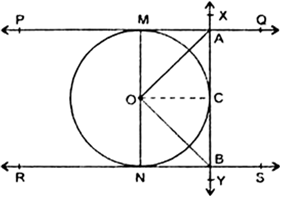
Prove that the angle between the two tangents drawn from an external point to a circle is supplementary to the angle subtended by the line-segment joining the points of contact at the centre.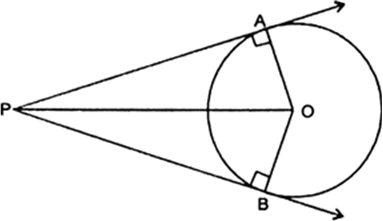
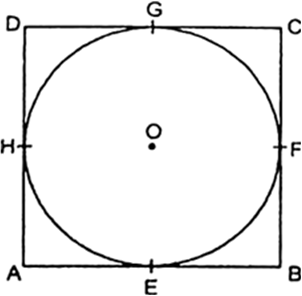
Since, the length of two tangents drawn from an external point to a circle are equal.
So, AE = AH ...(i)
BE = BF ....(ii)
CG = CF ...(iii)
and DG = DH ....(iv)
Adding (i), (ii), (iii) and (iv), we get
AE + BE + GC + DG = AH + BF + CF + DH
⇒ (AE + BE) + (GC + DG)
= (AH + DH) + (BF + CF)
⇒ AB + CD = AD + BC
⇒ 2 AB = 2BC
[∵ ABCD is a || gm So, AB = CD
and BC = AD]
⇒ AB = BC
Similarly, BC = CD and CD = AD
Thus, AB = BC = CD = DA
Hence, ABCD is a rhombus.
 Long Answer Type
Long Answer TypeA triangle ABC is drawn to circumscribe a circle of radius 4 cm such that the segments BD and DC into which BC is divided by the point of contact D are of lengths 8 cm and 6 cm respectively (see Fig. 10.14). Find the sides AB and AC. 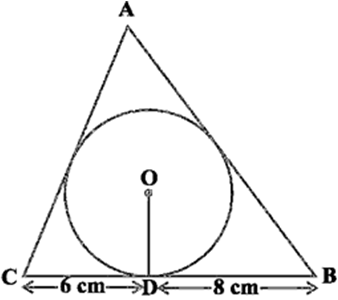
Fig, 10.14
Prove that opposite sides of a quadrilateral circumscribing a circle subtend supplementary angles at the centre of the circle.
 Short Answer Type
Short Answer Type